One of digital dentistry’s biggest companies has just released a brand new intraoral scanner! The Medit i900!
"The lightest and most compact scanner Medit has ever produced"
I have been beta-testing this scanner before its release and now the time has come to share our experiences. The company just launched this scanner today with a new webpage and video. Check them out!
So, how does this scanner compare to the other Medit scanners? What new features are included?
With a reputation for innovation and providing great bang-for-your-buck intraoral scanners, Medit has solidified its position as one of the leading names in dentistry since the launch of its first intraoral scanner in 2018.
Over the years, Medit has released a lot of products and diversified its portfolio. Since the Medit i500, we now have the i700, i700 wireless, the i600 (the successor to the i500), and now the flagship - i900.
Below is everything you need to know in this world's first comprehensive overview of the Medit i900! Starting off with a detailed video on all the new features.
The Medit i900’s new features
Significantly Reduced Size and Weight of the Medit i900
The biggest and most obvious change is the size of the new Medit i900. It really is tiny.
It is smaller than any other Medit scanner while also having a larger scanning head and thus field of view.
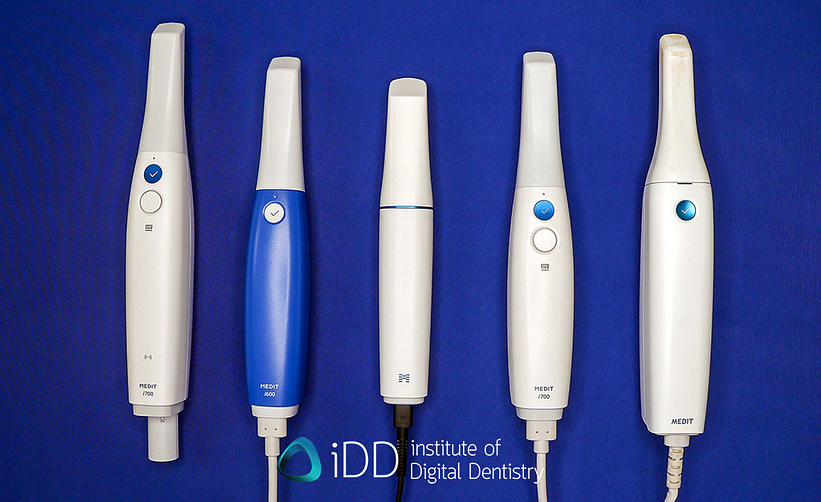
Medit i700 wireless, i600, i900, i700 (wired) and i500.
The i900 is 165 grams in weight and 35mm in width.
This is almost half the weight of the i700 (245 g) and less weight than an iPhone 15 Pro Max (221 g).
Comparing that weight to other scanners such as the i500 (280 g), TRIOS 5 (299 g), CEREC Primescan (524.5 g), and Aoralscan 3 (240 g), this means the i900 is one of, if not the lightest mainstream scanner on the market right now.
Interesting approach by the company to make this their focus. Medit has made the scanner much smaller and lighter, making it easier for you or really anyone on the team to scan patients.

Almost all intraoral scanners currently on the market.
Do You Have a Medit Scanner?
Choose this to access Free Medit training or discover our Mastering Medit course.
We have a great eBook for you that might help you. Grab it, it's FREE.
Wireless No More! The Medit i900 is a Wired Scanner.
Another surprising fact is that the i900 is a wired scanner.
While most other companies are releasing wireless products, and honestly, I thought the next scanner would be wireless too, Medit has taken a different approach.
Size and weight are the focus. One way to make a smaller scanner is to cut out all the components required for wireless. No batteries. It's just a simple USB C cable.
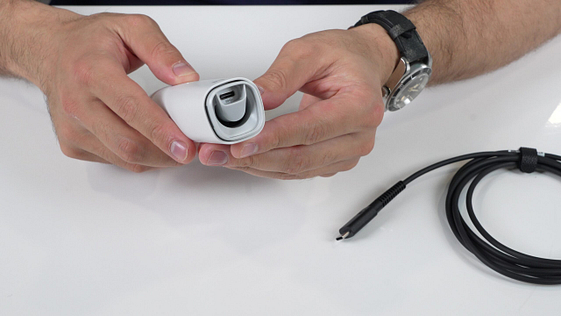
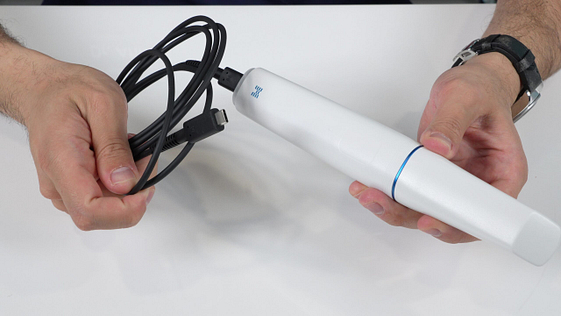
This is similar to the connection used by the i600 and i700.
A single cable that connects to the laptop and runs the scanner.
Medit has said they have upgraded this cable to improve durability. But time will tell.
The new cable does seem quite simple. A black USB C that if you didn't get it inside the Medit box, you would not know it is from the company. Two are included in the box.
Unibody and Symmetrical Medit i900 Design
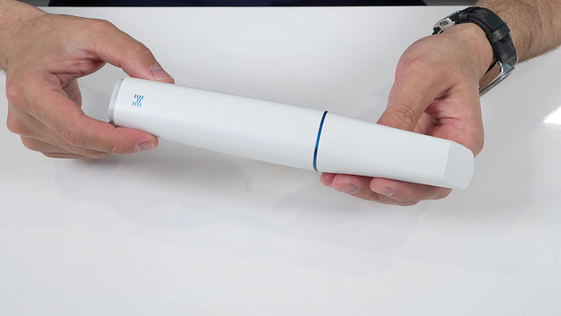
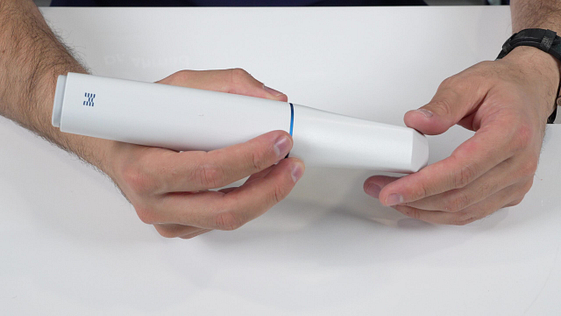
Adding to the new design elements and size is what the company calls the ‘unibody design’.
Basically, the scanner is made of one piece. There are no joints, which helps with the cleaning and maintenance of the device.
The body shape is also now completely symmetrical, which means you can hold the scanner in any way you like. It does feel comfortable in the hand, but personally, I found this mainly due to the weight of the product.
It is interesting to note there is no longer a UV-C LED like in the i700. This was a short-lived idea.
In general the device does feel well-designed and ergonomic in the hand.
Where are the scanner buttons? The New Medit i900 Touch Interfaces
One of the biggest changes and really a true innovation of the Medit i900 is the touch interfaces.
It is nice seeing a company do something different.
Basically, there are no more scanner buttons.
Rather you use the scanner via three new touch interface areas found on the body.
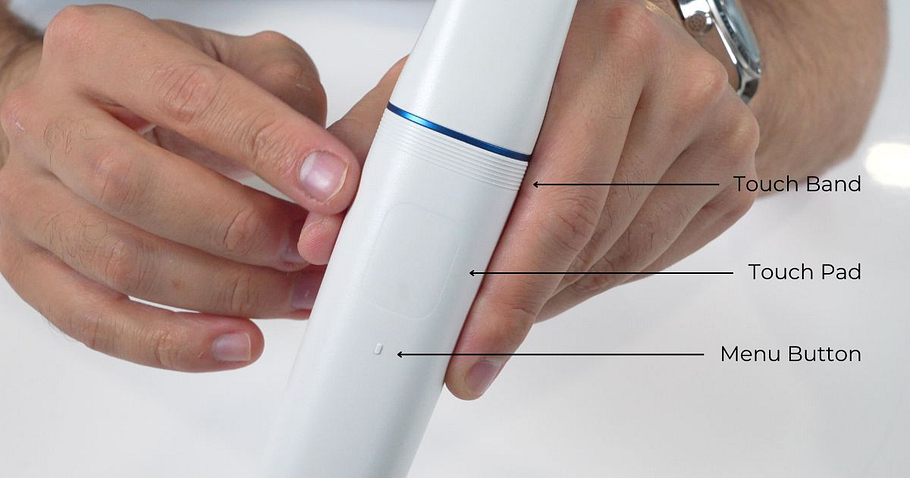
The 3 touch interfaces are as follows:
- Touch band - runs around the entire body. Used to start and stop the scanning process and also progress through the workflow by swiping it.
- Touch pad - a square touch pad used to orientate and view the scans
- Menu button - used to change the action of the touch pade
Quite a cool innovation. I found the touch band very responsive and worked seamlessly to start and stop the scanning process. Perhaps another way of slimming down the scanner by taking out all buttons?
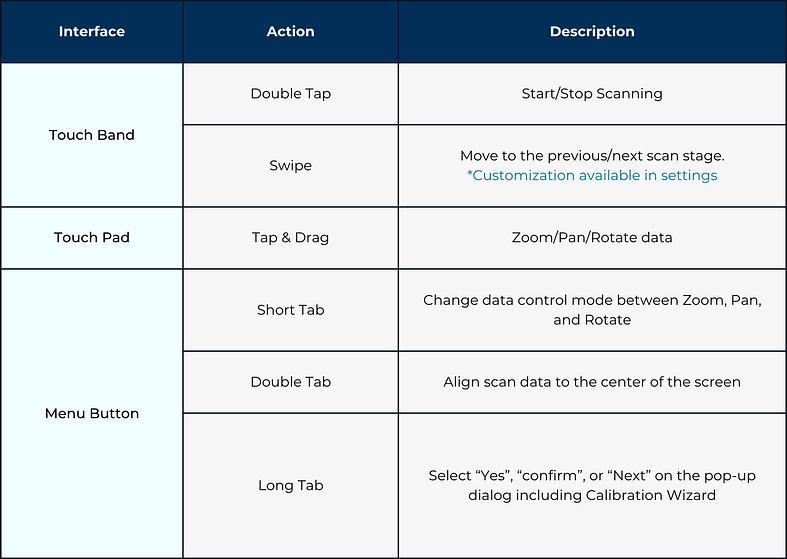
It does take time to get used to however. Just be aware, that this is more of a quality of life improvement than a huge game-changing feature.
Although touch interfaces is a cool idea, those that are used to scanner buttons (like myself) will have a bit of a learning curve involved with using these touch areas. I found myself accidently doing the wrong gesture etc. I personally prefer buttons for the simplicity but it was something I warmed up to with time. It is a cool innovation after all and something different.
Do You Have a Medit Scanner?
Choose this to access Free Medit training or discover our Mastering Medit course.
We have a great eBook for you that might help you. Grab it, it's FREE.
The i900 also has real-time haptics and an LED light at the back so you get immediate feedback during the scanning process.
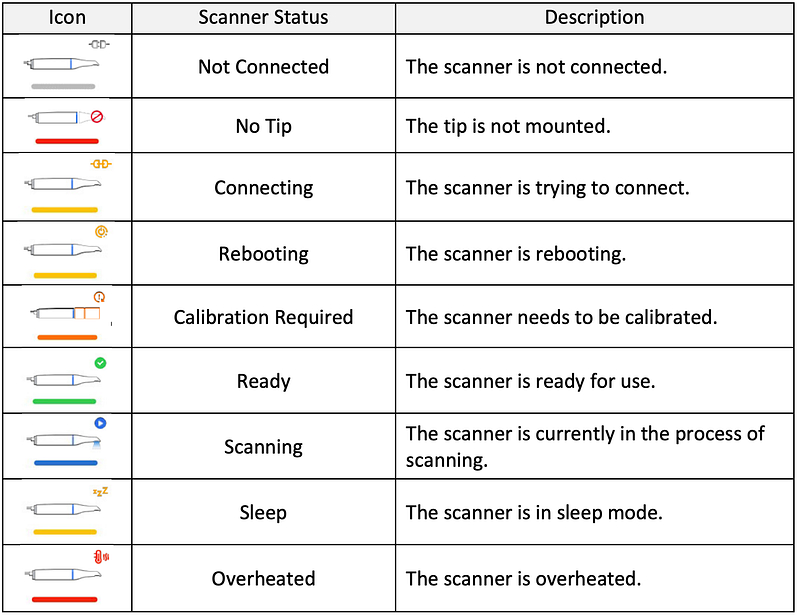
New Optical Engine of the Medit i900
Medit also introduced a new optical engine for the i900. This is their third-generation engine. The company says that this will improve scanning speed, depth of field and also improve scanning colours.
It is powered by '10-bit imaging technology' which the company says provides 64 times richer colour than previous medit scanners.
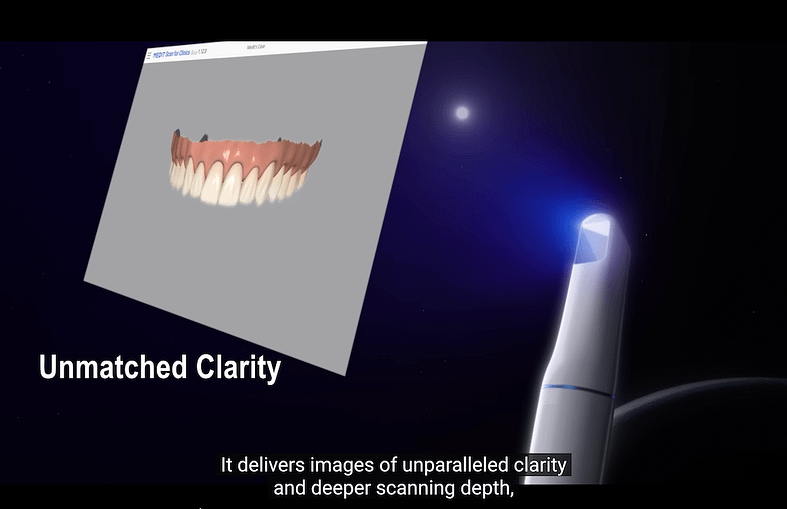
I found the new optical engine to work well. It is hard to say how much better it is compared to the i700 which was already an excellent scanner but there is definietly an improvement here. This is Medit's fastest scanner on the market.
The colours look like what we are used to from Medit, featuring a close-to-life aesthetic in the scans and ultra-high details. Even before post-processing they look quite good.
It feels like a nice upgrade on what was already an excellent line-up of scanners.
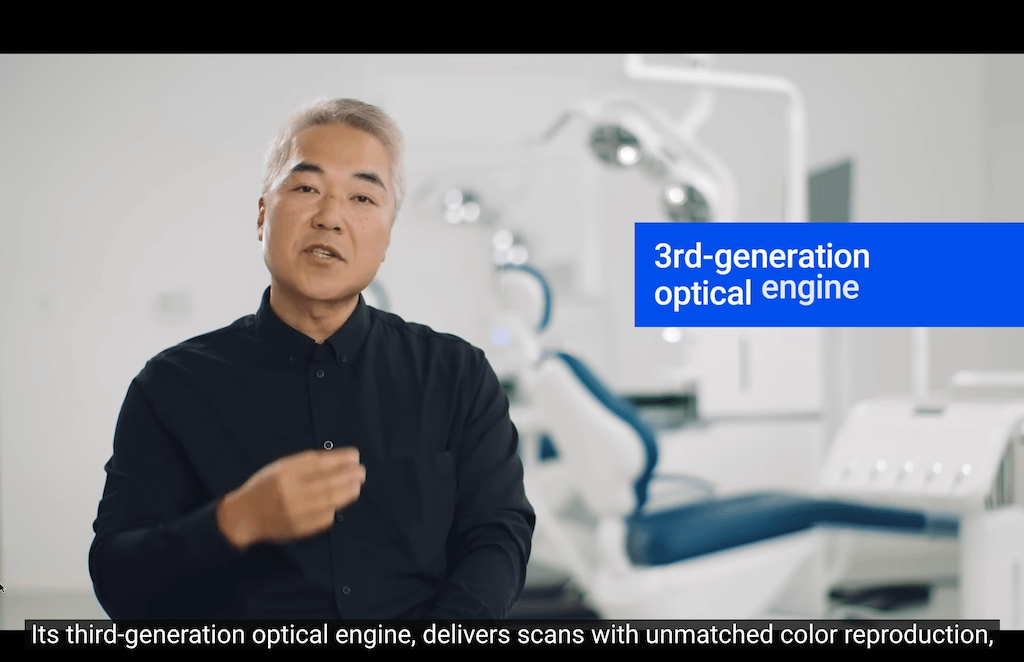
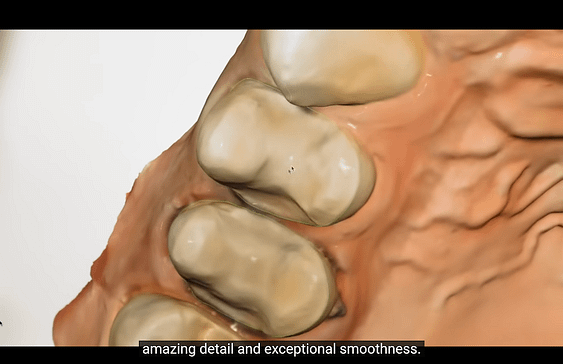
Three Different Scanner Heads
With scanners, the field of capture is important.
A larger field of view allows for a faster scan with fewer stitching errors.
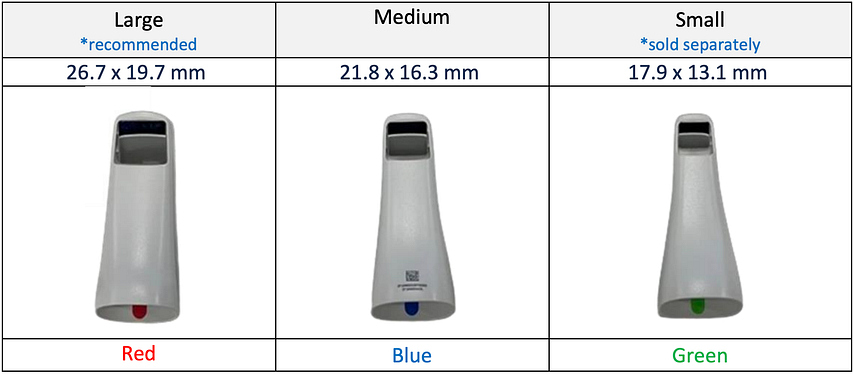
Medit has also increased the field of view of these new scanners by releasing new scanner heads for the i900. These are not interchangeable with previous models.
Within the box there are 2 large scanner tips and 2 medium scanner tips. Smaller scanner tips are also sold separately.
The large scanner tip is larger than any previous medit scanner tip allowing you to capture more in a single swipe of the scanner.
Each tip for the i900 can also be autoclaved 150 times, so the company has improved their durability too.
Finally the cost of the Medit i900- $24,500.00 USD
At 24,500 USD, this is the most premium Medit scanner released.
So the entire portfolio is as follows:
- Medit i600 - $10,500
- Medit i700 - $15,000
- Medit i700 Wireless - $17,500
- Medit i900 - $24,500
Other Improvements to the Medit i900
- Medit i900 has to be calibrated every 3 months. Not quite calibration free, but much better than other Medit scanners. A similar 'Medit type' of calibration unit is included with the scanner.
- The scanner has ultra-fast preheating. Only taking a 10-20 seconds to be ready to scan.
- No subscription fees or yearly fees of any kind. Interestingly the software is staying the same too.
That’s everything we know about Medit’s new i900. What are your thoughts? Leave them below.
Of course, iDD will be reviewing the i900 to let you know if it’s worth getting or not - stay tuned!
By the way, if you want some free digital dentistry education - including the fundamentals of intraoral scanning - check out our Free Academy. It has over 20 resources from PDF checklists, reviews, price guides, courses and more.

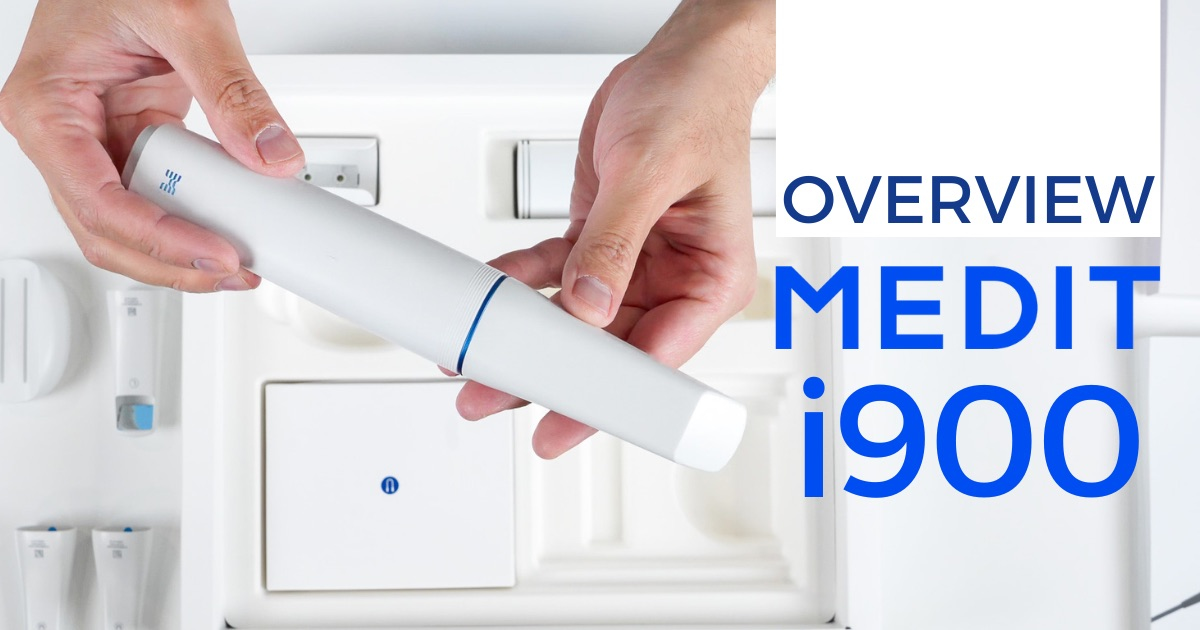
what would you rate percentage wise compared to AoralScan Elite scanner?
Similar pros and cons. Both are great scanners, have great software. Medit i900 has better and more refined software arguably. But the Elite has intraoral photogrammetry.
How is tech support for Medit scanners (IS there tech support for Medit scanners)? I returned my Trios 3 Shape 5 after roughly 1.5 years of issues with 2 separate Move + units. My concerns are regarding the ability to troubleshoot with Medit, iTero or Primescan. Any guidance on these is greatly appreciated!
Where are you based? Generally very good, but to be honest so is 3Shape… so not sure what happened there.
Hi Dr Ahmed, did i read somewhere that the i900 is connectable to a tablet making it an extremely portable option?
This is the new Medit i900 Mobility that was just released. Not the standard one.
Check this – https://instituteofdigitaldentistry.com/news/medit-i900-mobility-i900m-the-worlds-first-comprehensive-overview/